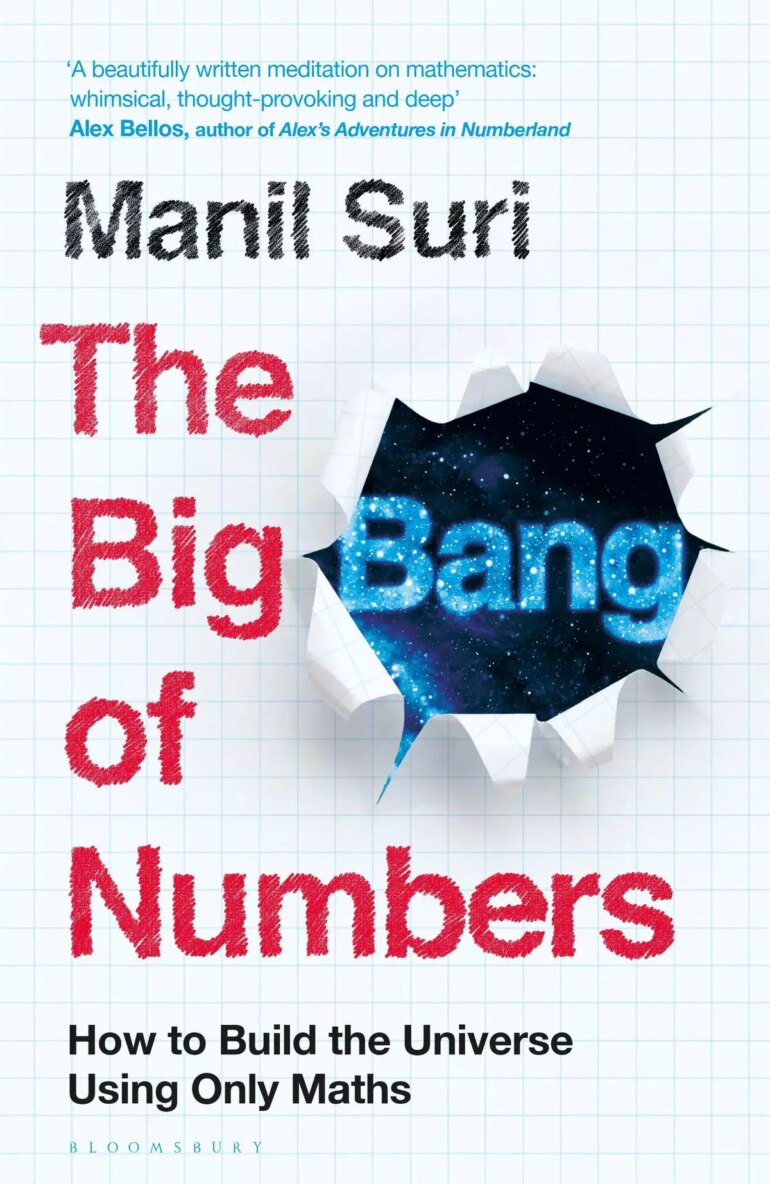The Conversation U.S. launched its new book club with a bang – talking to mathematician Manil Suri about his nonfiction work “The Big Bang of Numbers: How to Build the Universe Using Only Math.” Suri, a previous author in The Conversation, has also written an award-winning fiction trilogy, in addition to being a professor of mathematics and statistics at the University of Maryland, Baltimore County.
Below is an edited excerpt from the book club discussion. You’re welcome to keep the conversation flowing by adding your own questions for Suri to the comments.
Watch the full book club meeting and leave your own question in the comments at the bottom of this article.
What is the Big Bang of numbers and where do you go from there in the book?
I think the story for me started way back when I was an undergraduate in Bombay. My algebra professor told us this very famous saying by Leopold Kronecker, the famous mathematician, that God gave us the integers and all the rest is the work of human beings. What he meant was that once you have the whole numbers – 1, 2, 3, 4 – which are somehow coming from heaven, then you can build up the rest of mathematics from it.
And then he went on and said, Hey, I can actually do better. I don’t need God. I can actually, as a mathematician, create the numbers out of nothing. And he showed us this marvelous, almost magic trick, where you start with something called the empty set and then you start building the numbers.
It was the closest I’ve been to a religious experience, almost like the walls just dissolved and suddenly there were numbers everywhere.
Once I started writing my novels, I was meeting a lot of people who were artists and writers. And they would always say, you know, we used to love math when we were in school, but afterward we never had a chance to really pursue it. And can you tell us something about your mathematics?
So, I started building a kind of talk, which started with this big bang, as I call it, building the numbers out of nothing. I finally decided I should write a math book, and it would be aimed at a wide audience.

Patterns in nature, like the triangles on this shell, can be explained by simple mathematical rules.
Larry Cole
And I said, well, can you go further? You can create the numbers, but can you actually start building everything, including the whole universe from that? So that was a way to try to lay out mathematics almost as a story where one thing follows from the other and everything is embedded in one narrative.
Who were you imagining to be your readers as you were writing the book?
There’s just so much joy to be had out of mathematics, so many things that you don’t really see in normal courses where the emphasis is always on doing the calculations, finding the right answer. So this book is written for people who want to really engage with…


